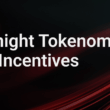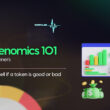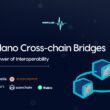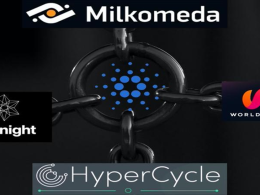In this article I propose an analysis on the philosophy and inspiration behind the Cardano blockchain, based on the original essay published on June 28, 2017, written by Charles Hoskinson, its co-founder.
Document in its original format: https://whitepaper.io/document/581/cardano-whitepaper
Document standardized by IOHK: https://why.cardano.org/
The document contains 6 sections: Introduction, Science and Engineering, Interoperability, Regulation, Sustainability, and Conclusion, however my analysis is thematic and groups the statements that are related throughout the document, in order to understand the general idea.
It is common for blockchains to have a Whitepaper, but some also have a Manifesto, such as Ergo, or A Cypherpunk’s Manifesto, So, is this document a Whitepaper or a Manifesto?
Let’s define each one.
Does Cardano Have A Whitepaper?
A Whitepaper is a technical document that explains in depth the development of a product that offers a solution, with original and/or compiled research, with the aim of promoting that product in the market.
A Manifesto is a public declaration of principles and intentions, often of a political or artistic nature, which includes the philosophy followed, with a declaration of doctrines, purposes or programs.
As you will read in this article, the essay written by Charles Hoskinson seems to contain a bit of both, without defining himself as one of them in particular.
Hoskinson himself clarifies that Cardano did not start with a complete roadmap or even a Whitepaper, but instead adopted a collection of design principles and engineering best practices, including among the most notable, the separation of accounting and computing into different layers, with modular components, with peer-reviewed development.
In any case, the important thing is to understand the motivations of its creator.
Hoskinson’s Motivation
The goal, Hoskinson says, is not to propose a totally new way of developing software and protocols, but to recognize that great software and protocols already exist and that we can mimic the conditions that led to their creation. Second, make these conditions public knowledge and open source if possible, so they can be imitated for the benefit of the entire industry.
The essay considers cryptocurrencies a prime example of the social component of money, since much of the value is derived from your community, the way it uses the currency, and its level of involvement in the evolution of the currency. A cryptocurrency is more than the sum of its protocols, source code, and utility, and is ultimately a social system that inspires, empowers, and connects people.
It proposes a long-term vision on how to improve the design of cryptocurrencies, so that they can work on mobile devices with a reasonable and secure user experience, with the possibility of accounting for multiple assets in the same ledger, which clearly refers to the management of native tokens, such as NFTs, which we now know are very easily to mint.
Hoskinson begins the presentation of the document by citing that the Cardano project began in 2015, and the general approach is to provide a balanced and sustainable ecosystem that best responds to the needs of its users.
The Tokenomics
The Cardano blockchain started on 2017-09-23 at 21:44:51, and here you can see the genesis block. In epoch 0, 31.11 billion ADAs were minted, or 69.14% of the total to be minted.
2,463,071,701 $ADA were allocated to IOHK, upon network launch, another 2,074,165,644 $ADA to EMURGO, and 648,176,761 $ADA given to the Cardano Foundation, representing ~12% of the total supply that will be minted over time.
I want to emphasize that ADA is mentioned only once in the entire document, on the occasion of its initial distribution, through a token-generating event to buyers from all over Asia, who were then able to sell them in a secondary market.
There are critical voices in the community about this economic decision.
Historical information on transparency can be consulted in this Internet archive: GENESIS BLOCK DISTRIBUTION.
For the sustainability of development, it is proposed to include a decentralized financing mechanism for future work, which I understand refers mainly to governance and the teams that work on the network protocol, mentioning that any user may be eligible to request funds from the trust through a voting system, and the inclusion of a formal blockchain-based system for proposing and voting for soft and hard forks.
That is why he mentions the need for a Treasury, such as the inclusion of a decentralized trust, financed by the issuance of the ADA cryptocurrency and transaction fees.
Thus was created the Cardano Treasury which at the time of writing this article amounts to 1.21 billion ADAs, (~3.40% of the current currency of 35.64 billion), product of the collection of a (mandatory) income tax of 20% of the rewards of the SPOs and delegates, that is, on fees and issuance of each epoch.
This Treasury also funds the Catalyst project for particular projects on the Cardano blockchain.
The Regulations
Hoskinson considers the inclusion of optional metadata important, in order to better fit the needs of legacy systems, as it is not enough to know how much value moved between accounts because regulations often require stakeholder attribution, compliance information, suspicious activity reports and other records and actions.
Cardano recognizes that users may need or be legally required to share transactional metadata with certain actors such as tax authorities, but they believe that this sharing has to be with the user’s consent.
He also believes that the blockchain has tremendous power to eliminate fraud, waste and abuse by providing auditability, timestamp and immutability, therefore Hoskinson believes that some metadata should be published on the Cardano blockchain.
He also mentions that different instances of CCL come to fruition with different rules about transaction evaluation, such as gaming activities could be restricted unless KYC/AML data is present, simply by blacklisting unattributed transactions.
Lastly, it seeks to find a healthy middle ground with regulations without compromising some basic principles inherited from Bitcoin.
It is clear to me to see in this document the proposal for permeability to regulations, but I understand that it is complex to satisfy all the different jurisdictions in the world, and also to establish what is the “acceptable” limit of “external” legal incursion into Cardano space.
The Technology
The Research by the IOHK team results in a product of two collections of protocols, a two-layer blockchain construction. The accounting of the value of the complex calculation with a cryptocurrency based on Proof of Stake in the Cardano Settlement Layer (CSL) is separated into one layer, and in another layer a set of protocols executed in the Cardano Computation Layer (CCL).
Its Ouroboros protocol has been designed by a team of cryptographers from five academic institutions, led by Professor Aggelos Kiayias of the University of Edinburgh. CSL and CCL share the same consensus algorithm.
In the Cardano community we can appreciate a better performance and a better evolution for changes, as a result of a blockchain with two processing layers, with a modular design of its components.
Hoskinson said it was a difficult decision to choose Haskell for the development of the protocol, since in the world of functional languages there are wide options. Haskell was the final decision for various technical reasons.
The IOHK team developed Plutus, both as a general purpose smart contract language and also as a special purpose DSL for interoperability. Plutus is a functional language written based on Haskell concepts, which can be used to write custom transaction scripts.
As for the signature cryptography, it uses the Ed25519 elliptic curve, and in the future it is planned to integrate resistant signatures to quantum computers.
Cardano has taken a pragmatic approach to address multi-asset accounting, the UTXO (Unspent Transaction Output) model, to allow tracking of a very large state of unspent outputs.
As for security, the document says that the final design adds trusted Hardware Security Modules (HSM) to the protocol stack, which provide massive performance improvements without security concerns beyond relying on the vendor, and with the use of Through Sealed Glass Proofs (SGP) HSM can provide assurances that data can be verified and then destroyed without being copied or leaked to malicious outsiders.
It is mentioned that the scalability for Cardano in its Layer 1 is favored by its consensus algorithm, since Ouroboros allows a decentralized way of choosing a quorum of consensus nodes, being able to apply similar techniques for network propagation, and also for sharding the blockchain itself into unique partitions.
He will refer to interoperability with open questions such as, What systems, standards, entities, and protocols should be targeted to ensure there is reasonable certainty of interoperability? Can these bridges be federated or decentralized? Like exchanges, Will they become central points of failure for hackers, malicious owners, or overzealous regulators?
Hoskinson says, value can’t always flow freely in the legacy world. Embargoes, sanctions, capital controls, and legal actions could freeze assets. To be interoperable, you can’t create an always-open exhaust valve for the value to leak.
Once tokenized, the value should behave like a single object. The challenge in legacy interop when it comes to tokenized value is that the assumptions of trust, trustworthiness, and auditability change as tokens flow between ledgers.
Moving from the legacy world to distributed digital ledgers, interoperability becomes much simpler, as each ledger has a network protocol, communication standards, and security assumptions about its respective consensus algorithm, and they can be quantified easily. CSL supports a restricted version of Plutus for interop scripts.
The reference wallet node for CardanoIt’s called Daedalus. Its front-end was designed on Electron, an open source project published on Github that combines Node and Chrome.
The essay argues that, on a macro scale, value flows through specialized channels that are regulated, rich in metadata, and actively monitored by law enforcement, governments, and international regulators.
The Privacy
I am clear that Cardano is not Monero, of course, nor does it pretend to have the same philosophy. Its transparency design in the ledger book that allows reading all transactions, has a pseudo-anonymous character. Even more so when, due to its Proof of Stake design, all the funds in a wallet can be read from the staking key, but without knowing who owns it, since on-chain personal data is not recorded.
Hoskinson acknowledges that, culturally, in the crypto space, government action is viewed as corrupt, inept, or ineffective.
He says that a cryptocurrency designer can renounce principles and concede to any demands that their local jurisdiction places on their code, thus compromising the privacy and integrity of their users, or they can adopt a more anarchist-based philosophy, which is divorce from current best practices and laws.
Hoskinson understands that this narrative is a false dichotomy caused by a lack of imagination. He argues that the reality is that most users are not concerned with existing rules for markets, but rather are concerned with sudden rule changes to benefit one or more players. They worry about the lack of transparency about who gets special privileges.
He says a distinction must be made between individual and market rights, and since cryptocurrencies have a global reach, rights must be as user-oriented as possible. The marketplace must be transparent about the use of the data, everyone must follow the same set of rules, as certainty in the rules is needed.
He believes that privacy should be reasonable and under the control of the user, not a gatekeeper. The flow of value must have no restrictions. The security should not be subject to sudden seizure without consent.
Hoskinson argues that ownership and source of funds often depend on know-your-customer rules. When a money service business, such as a bank or money exchange, opens an account for a new customer, they are usually required to collect basic data about the customer and where they acquired their funds from.
Decentralization
In IOHK they admit that total decentralization is impossible and maybe even counterproductive. However, they believe that certain factors can be encouraged to produce a more balanced system.
They understand that while centralized custody of crowdsale funds allows for quick and agile development of the protocol during the early days, funding must be diversified. That is why it has been decided to integrate a Treasury system in Cardano.
They claim that roadmap decisions cannot be centralized to a set of developers, so there must be a blockchain-based method for proposing, vetting, and enacting changes to the protocol. That is why they intend to implement a formal process to submit Cardano Improvement Proposals through a system coordinated by the CSL itself.
Regarding the transparency of the product, the document proposes the Cardano Foundation as the final auditor of IOHK’s work, in the periodic review of the source code contained in Cardano Github, and the review of all Cardano documentation in general.
The document instructs IOHK to submit regular and timely reports to the Foundation for review and the Foundation will, in turn, publish a development monitoring report for the Cardano community at least quarterly.
I have not been able to find those published periodic reports.
They say that the incentives behind Cardano maintenance should be directly aligned with the aggregate desires of all users. A cabal of specialized actors that are independent of the will of the larger community cannot be allowed to emerge. They believe that the Ouroboros protocol offers an elegant solution.
Final Words
As I mentioned at the beginning of this article, the document analyzed is neither a Whitepaper nor a Manifesto.
It does not contain information with too many technicalities to be a Whitepaper, for example it does not mention the total amount of supply of 45 billion of its ADA cryptocurrency, nor does it contain definite policy exclamations to be a Manifesto.
Beyond its framework, this essay outlines the idea that the author, Charles Hoskinson, wanted to express about his vision and mission in developing his blockchain project.









